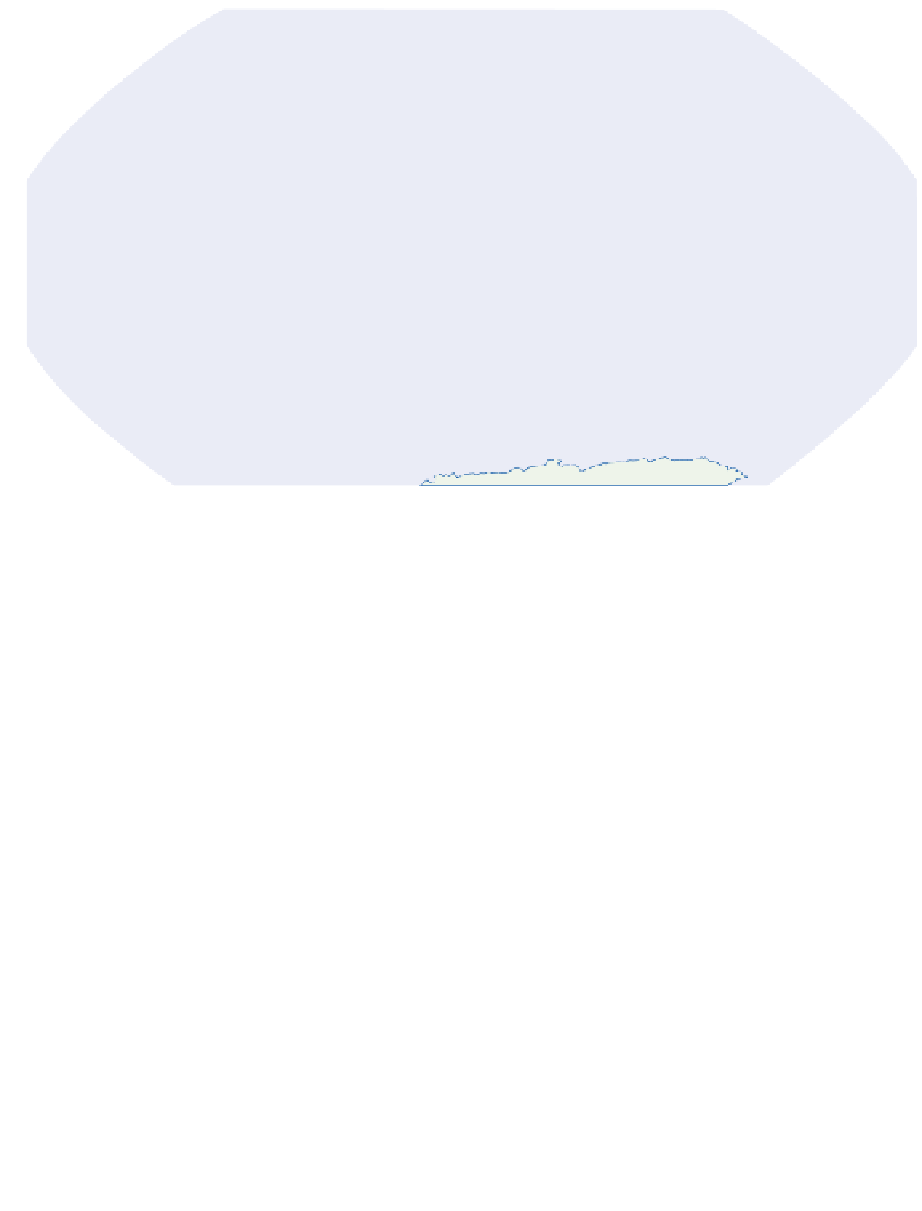Geoscience Reference
In-Depth Information
6
80°N
5
0
60°
-53
=
-59
-60
-45
40°
+
-15
+
20°
0
6
+
+
0°
-45
-60
-1
5
+
-56
+
20°
-3
0
40°
-60
=
=
-75
-60
60°S
160°W
140°
120°
100°
80°
60°
40°
20°
0°
20°
40°
60°
80°
100°
120°
140°
160°
180°E
Figure 5.11
Mean annual net cloud forcing (W m
-2
) observed by the Nimbus-7 ERB satellite for the period June
1979 to May 1980.
Source: Kyle et al. (1993). From Bulletin of the American Meteorological Society, by permission of the American Meteorological Society.
An open cellular pattern, where cumulus clouds
are along the cell sides, forms where there is a
large air-sea temperature difference, whereas
closed polygonal cells occur if this difference is
small. In both cases there is subsidence above the
cloud layer. Open (closed) cells are more common
over warm (cool) ocean currents to the east (west)
of the continents. The honeycomb pattern has
been attributed to mesoscale convective mixing,
but the cells have a width-depth ratio of about
30:1, whereas laboratory thermal convection cells
have a corresponding ratio of only 3:1. Thus the
true explanation may be more complicated. Less
common is a radiating cellular pattern. Another
common pattern over oceans and uniform terrain
is provided by linear cumulus cloud 'streets'.
Helical motion in these two-dimensional cloud
cells develops with surface heating, particularly
when outbreaks of polar air move over warm seas
and there is a capping inversion.
3
Global cloud cover
There are difficulties in determining cloud cover
and layer structure from both satellite and ground
observations. Surface-based estimates of cloud
amounts are some 10 percent greater than those
derived from satellites, mainly owing to the
problem of estimating gaps near the horizon. The
greatest discrepancies occur in summer in the
subtropics and in polar regions. Total cloud
amounts show characteristic geographical, latitu-
dinal and seasonal distributions (see
Figures 3.8
and
5.11
). During the northern summer there
are high percentages over West Africa, north-
western South America and Southeast Asia, with
minima over the Southern Hemisphere conti-
nents, southern Europe, North Africa and the
Near East. During austral summer, there are
high percentages over tropical land areas in the
Southern Hemisphere, partly due to convection






















































































































































